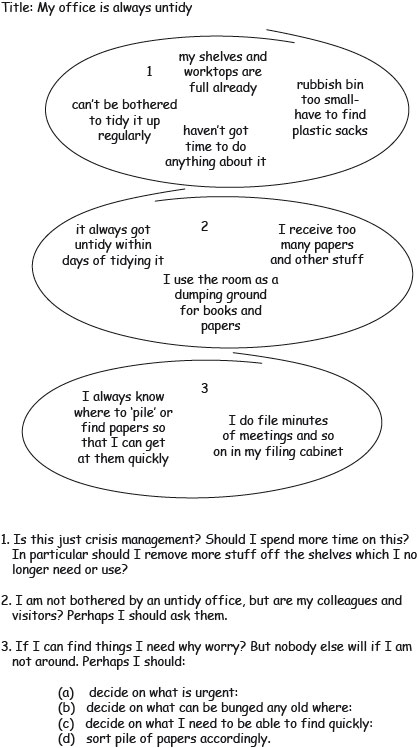4.1 Additional ways of identifying a system of interest
This is not the only way of describing hierarchies as it depends on the purpose behind the categorisation and the purpose we might ascribe to each (sub) system description (and Boulding’s descriptions are more recognised systems than explanatory systems as discussed earlier). However, there are additional ways of identifying a system of interest beyond that of ascribing a purpose to a system through a textual description using active verbs rather than passive nouns as I did in Activity 1. In Activity 2 you will explore another, visual, approach.
Activity 2 Identifying systems of interest – a visual approach
- Take an issue you are concerned about; one that puzzles or worries you and seems complicated.
- Take a piece of paper and write down a brief title to the puzzle or problem you face.
- Turn over the paper and on the other side jot down the first ten or so thoughts you have about the key features of the issue. Don’t write them down as a list, but write them as if they were in small boxes scattered at random on the page.
- Now see which of your thoughts have something in common, i.e. seem to be about the same point or problem, and draw a boundary round them. You may end up with two or three boundaries. Don’t include all your ideas just for the sake of it: if one or more seems to have no strong connection with any of the others, leave it without a boundary round it.
- For each set of thoughts enclosed in a boundary, write down the point or problem they have in common and then jot down any ideas you may have for dealing with that problem.
- Look at the brief title on the other side of the paper and see if what you have done has helped you to take a new view of the issue.
Comment
Once again I have decided to provide an example myself for you to compare yours with. Figure 6 is what I came up with when thinking about my untidy office and generally shows groupings according to influence and control in what is more of a difficulty than a mess (if you can excuse the pun!).

